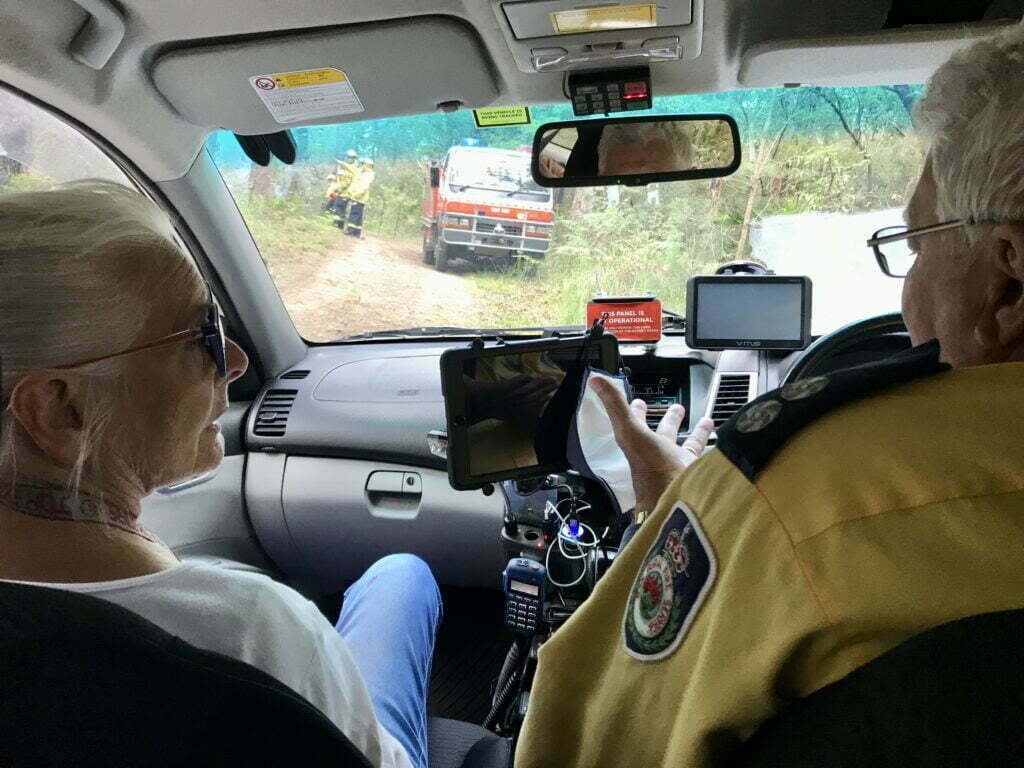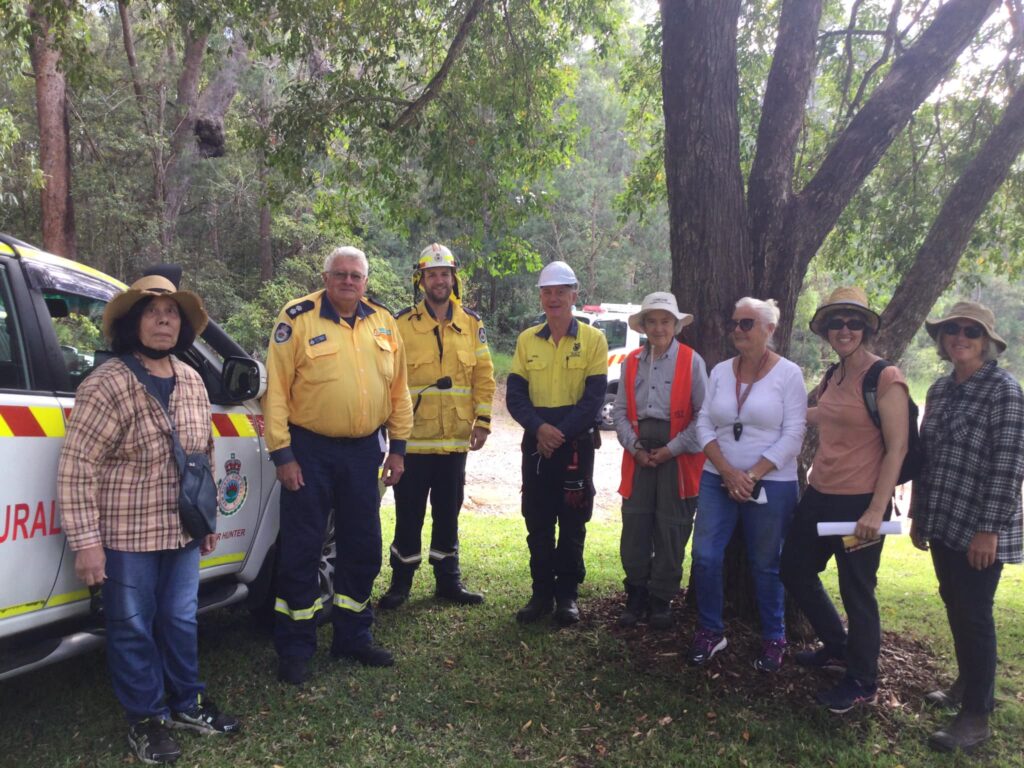Cool, calm and considered: a hazard reduction burn
Three such words are rarely associated with a burn off. Other words that came out of the mouths of Soldiers Point – Salamander Bay Landcare members included meditative, peaceful and careful when they had an opportunity at Stoney Ridge to watch the Rural Fire Service (RFS) crews from Soldiers Point, Fingal Bay, Salt Ash, Tilligerry, Lower Hunter Mitigation and Lower Hunter Fire Control in action.

Port Stephens-based RFS Group Officer Bruce McGrath provided 6 members of the Landcare group with a guided tour of the Stoney Ridge burn. Bruce has over 25 years of experience volunteering with the RFS and he seemed to enjoy the opportunity to share his knowledge. From the comfort of his 4WD, he told us of the science that was considered prior to undertaking the burn.
Bruce shared how the local crews made assessments about the amount of groundcover. He shared the maps that indicated the target areas requiring attention. He explained how they liaised with people who understood the flora and fauna in the specific area. For example, Bruce knew about the dormant period of the beautiful orchids that are found in Stoney Ridge and his maps identified the Chinese Violet weed on an area to be specifically targeted.
Bruce also discussed the meteorological assessments that they monitored the month, week, day prior and morning of the burn. He explained how the crews, totalling 7 fire appliances and over 35 volunteers, were coordinated and managed to function as one team over two sites. Bruce even demonstrated how the communication systems operated to keep everyone up to date with what was happening as it unfolded including a system that could upload live data from an iPad on his dashboard.
I found it really interesting the way they looked at the conditions and trialled how the fire was going to react before they did the burn… I was also impressed with the way they looked at the plant lists… They are looking at things now that Aboriginal people always knew.
Carol Ridgeway-Bissett, Traditional Custodian and Knowledge Holder, Maiangal Traditional Country.
The Landcare members were able to see first-hand how the crews tested an area to assess the potential intensity of the fire. We watched the crews drip feed small flames onto small 10 metre long strips so they could follow behind and keep control of flames. They kept the flames to 30 – 40cm in height and were ready with the hose to dampen anything that got above 50cm. We also saw the crews rake the ground cover away from the base of all the trees so they did not catch alight. Logs and fallen trees were also actively avoided because the crews were aware that these were places of refuge for animals seeking shelter.
The Landcare members were in awe of the patience, skill and expertise of the fire crews who attended the Stoney Ridge hazard reduction burn that day in March. Carol Ridgeway-Bissett, traditional custodian and knowledge holder, Maiangal Traditional Country (Saltwater group of Worimi nation), said:
‘I found it really interesting the way they looked at the conditions and trialled how the fire was going to react before they did the burn… I was also impressed with the way they looked at the plant lists… They are looking at things now that Aboriginal people always knew.‘
Kathy Brown, co-coordinator of the Landcare group made this comment:
‘I was impressed by the level of research demonstrated before the burn took place. Before, they were just burning everything – now, they are being more considerate and taking a more scientific approach. They considered culture, science and the weather. We know that the information is out there, so it is great that the RFS are using it. And we appreciate the efforts of the RFS to work with Landcare groups to preserve our bushland.‘

After the December 2018 bushfire that burnt out over 80ha of the Mambo Wetland, Landcare groups expressed some concern to the RFS about their methods and understanding of the rare flora and fauna. Our guide Bruce acknowledged that bushfires can be very dynamic situations and they had not always got things right and that the RFS works with Council, other agencies and land owners to be better prepared with understanding of the ecology and the seasons and weather patterns that would affect wild fires and planned burns. We definitely learnt more about the rigorous process and our esteem for the crews in terms of their respect for science and consideration of the wildlife has heightened.
The SPSB Landcare would specifically like to thank Jessica Brine Emergency Management Resilience Officer from Port Stephens Council and Terry Burns Prescribed Burn Supervisor from Rural Fire Service for facilitating our guided tour.
